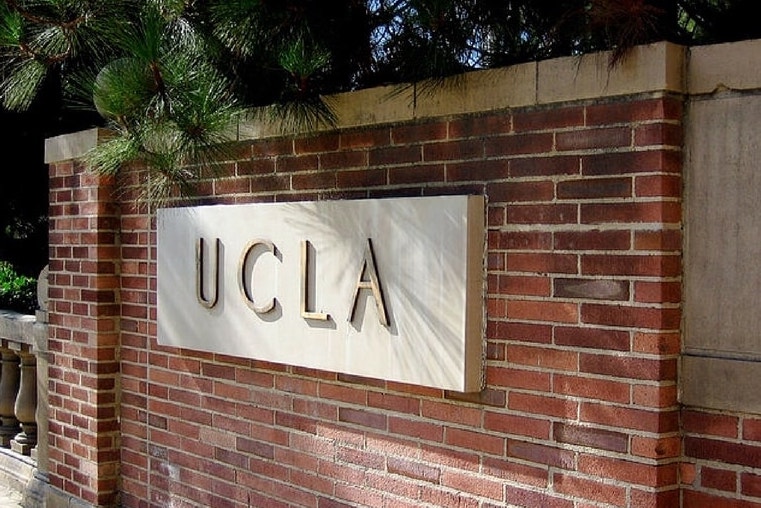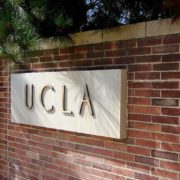
Starting in the fall of 2020, UCLA will now offer Pilipino Studies as a minor under the Asian American Studies Department (AASD), a major move for the historically diverse university.
Announced on April 29, the Pilipino Studies Minor Program is open to undergraduates, who may contact the AASD Student Affairs Officer to declare the minor, will encompass a wide range of courses related to Filipino language, history, diaspora issues, anthropology and geography.
Like other Asian American studies programs, the Pilipino Studies Minor Program will offer comprehensive social justice points of view and explore the global Filipino community’s relationship with concepts like capitalism, racism, colonialism and politics.
According to Melany De La Cruz-Viesca, associate director for the Asian American Studies Center (AASC), the idea of the Pilipino Studies minor program came from undergraduate and graduate students who were a part of the AASC and the Committee for Pilipino Studies (CPS) in the early 1990s. CPS was a part of the greater Asian Pacific Languages and Cultures Campaign (APLCC) and it worked to secure funding and lecturers for Tagalog-language classes.
“The Asian American Studies Department has been home to the Pilipino Studies Concentration for Asian American Studies Majors, so establishing and housing a new Pilipino Studies minor there is a welcome development that builds on those resources and sense of purpose,” she said. “A training in Pilipino Studies gives students the historical knowledge and critical thinking skills to imagine how to serve Pilipin[o] communities and fill the gaps in the existing literature, where the history, culture, and contributions of Pilipinos in America is sorely lacking.”
In a Zoom event hosted by the UCLA Pilipino Alumni Association on Thursday, June 12, founding members of the CPS as well as AASC faculty gathered to share the long history behind the formation of the Pilipino Studies minor program and the importance of the class itself.
“Pilipino American Studies was really a pipe dream,” said Enrique de la Cruz, who served as assistant director of the AASC in the 1990s and was pivotal to the creation of the bachelor’s degree program in Asian American Studies. “It was really hard to imagine because there were a lot of questions on how it will work in an academic setting.”
But the campaign to expand the academic offerings for Asian studies and language classes took off with the help of vigorous campaigns in the 1990s and the aughts to also secure funds and lecturers for Vietnamese, Hindi and Thai languages as well.
Though it took almost three decades for the minor to come to fruition, the years that led to the program’s establishment were spent formulating curricula and garnering more support.
When the Asian American Studies Department (AASD) was established in 2004, professor Lucy Mae San Pablo Burns also joined with “a special emphasis on Pilipino American Studies and Performance Studies.”
San Pablo Burns was the first Pilipino American studies professor to meet with the AASD, and soon after professor Victor Bascara (current chair of the AASD) joined the department in 2007.
“The students and movement ebbed and flowed with spurts of energy and focus through the years,” De La Cruz-Viesca told the Asian Journal in an email. “The students worked with many faculty, staff, alumni and community supporters through the years.”
With the establishment of the Pilipino Studies Minor Program, De La Cruz-Viesca hopes that it will spur more cultural developments in the Los Angeles area dedicated to the Filipino American community.
She brought up the accomplishments of Japanese American students who’ve gone on to create community institutions like the Japanese American National Museum and non-profits in Little Tokyo, projects that began because of robust efforts from Japanese American students at UCLA and other local universities.
“The minor program really represents for Filipino students, who are still largely second-generation, a way to build our knowledge base and resources for the community,” De La Cruz-Viesca said.








Why is the word Pilipino used instead of Filipino?
Bruh it’s Filipino not Pilipino.
I am a Filipina but have lived in the U.S. for most of my life. I Call myself a Filipina rather than a Pilipina, which I think would be more correct in more recent times because before I left the Philippines in 1957 it was correct to use the “f” spelling and so that is what seems more natural to me. The National language of the Philippines is primarily Tagalog, the language spoken in Manila and the surrounding areas. There is no “f” sound in Tagalog, therefore “Pilipino” rather than “Filipino” is now used to reflect the realities of the language. Using the “f” spelling and sound is a throw-back to colonial Spanish times and most probably the American occupation. More than likely there is no “f” sound in the other Pilipino languages. I should take a course in the new Pilipino Studies at UCLA to learn more. Best wishes to the faculty and students in this division. amelitadolorico@yahoo.com
The letter “f” or the “f” sound does not appear in the Pilipino language unless it was a foreign word that was adopted into the language. The actual name of the country which Americans call the Philippines is actually called Las Pilipinas in the native tongue. I did not learn this until I took the Pilipino Experience in America class when it was first offered at UCLA in the mid-80’s under visiting Professor Tuyay who would take the train from San Diego to teach the class. How I loved that class and the heated discussions it generated amongst my fellow Pilipino-American activist classmates. Even though Americans have accepted the spelling: Filipino, filipino and even philippino, out of pride for my parents’ native country, I’ve switched to the spelling Pilipino–thus refusing to turn it into the “f” word since, as I said before, the letter “f” or the “f” sound does not appear in the native language. As a good example of this, there is a joke that circulates among Pilipinos that only Pilipinos can use the word “Paul” (or “pall”) 4 times in the same sentence: “Oy, Paul! Be care-pall! You might pall in the swimming pall!” As an aside, the country’s name, The Philippines, came from naming the country after King Philip of Spain. As this was a symbol of Spanish colonialism, there was a movement in the Philippines to change the name of the country. Their early efforts came up with hilarious names when people familiar with the various Philippine dialects translated some of these names and discovered that some of these suggested names had other connotations in other dialects. After that, I guess the movement died.
i want to apply for UUCLA